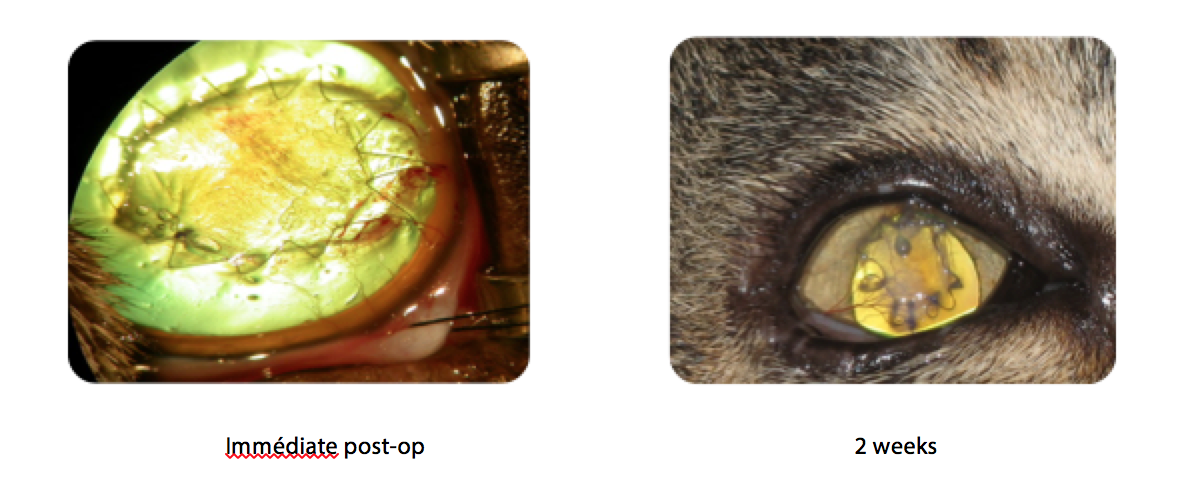What is an corneal sequestrum?
A corneal sequestrum is a dense, black spot on the cornea (the clear front part of the eye). This condition appears to be unique to cats. The development of a sequestrum follows this sequence: A cat suffers trauma (external trauma, abnormal eyelids), or infection of the cornea (viral infection), resulting in a corneal ulcer (a defect in the surface layers of the cornea). Sometimes, for reasons that are not always understood, these corneal ulcers fail to heal and the ulcerative surface layers become sequestered from the healthy adjacent cornea and undergo cell death. Pigments in the tear film may accumulate in the affected tissue, coloring the ulcerated area black. This dark, discolored area is called a corneal sequestrum. A corneal sequestrum is thus an area of dead, discolored cornea

A sequestrum may eventually slough from the cornea after several months; alternatively, it may remain in the cornea and progress deeper through this tissue. A medical treatment (mainly artificla tears) can be administered and enough at the beginning of the disease.

Surgery is recommended if cats are painful or if the sequestrum persists for longer than a few months. The reason is that if a sequestrum is present for a long time, it may progress more deeply into the cornea. Removal of a deep sequestrum is more difficult than removal of a superficial one, and if it is very deep there is a risk of perforation of the eye.
Surgical treatment: The first step of all techniques is a superficial keratectomy to remove the sequestrum.

Following removal of the sequestrum, we recommend placing either a Biosis, an equine amniotic membrane or conjunctival graft or a corneal transplant into the area where the sequestrum was removed. If a sequestrum is removed and the cornea left uncovered there is a significantly higher risk of the sequestrum recurring. Placement of a graft or corneal transplant helps to prevent recurrence of the sequestrum. The transplant or graft may not perfectly clear but will often become clearer over time.
Surgical treatment: The second step of the surgery can be a conjunctival graft to cover the corneal defect.

Surgical treatment: The second step of the surgery can be a corneo-conjunctival transposition to cover the corneal defect.

Surgical treatment: the second step of the surgery can be a graft of Biosist (pork intestine sub-mucosa) or an equine amniotic membrane to cover the corneal defect. The use of these biomaterial has the benefit to leave minimal scar on the cornea and therefore a good transparency after the surgery.


